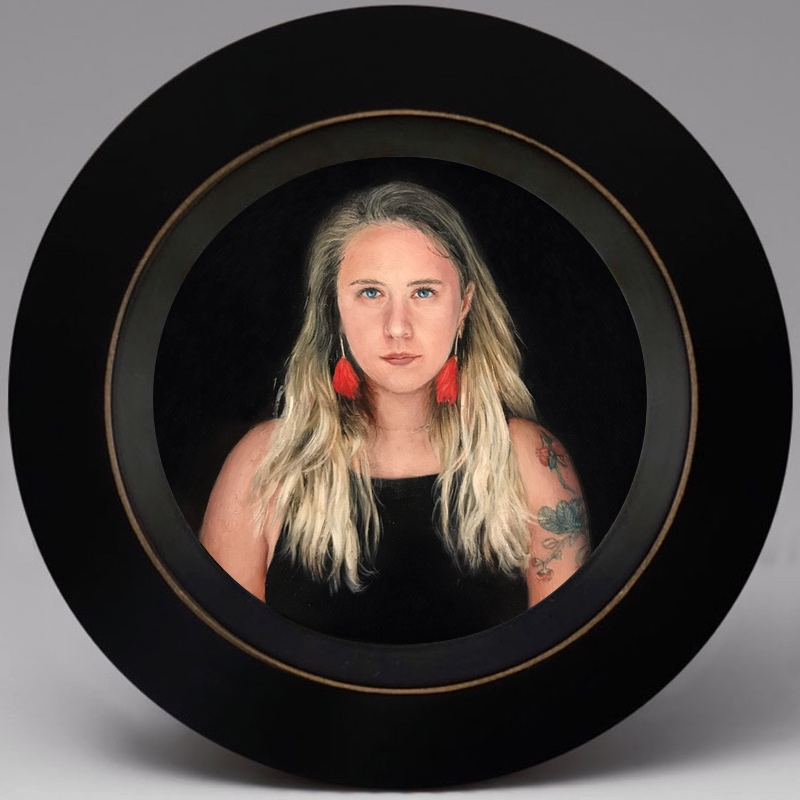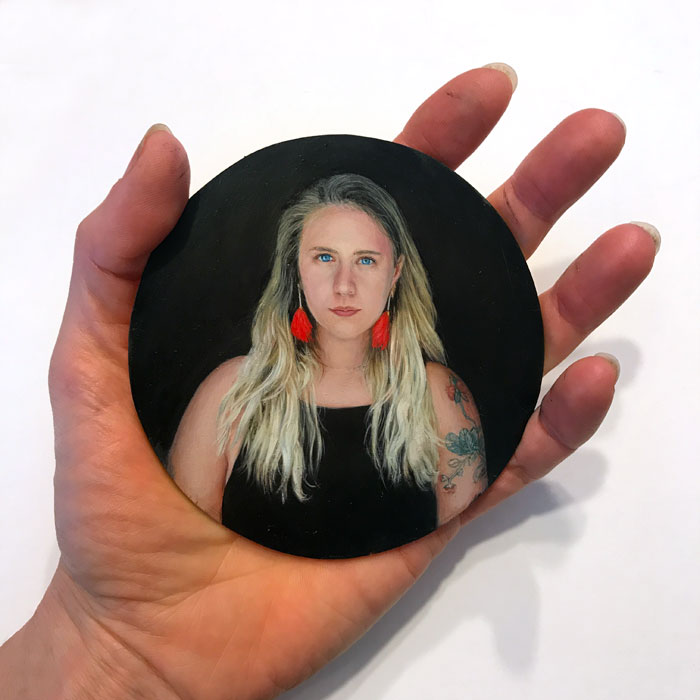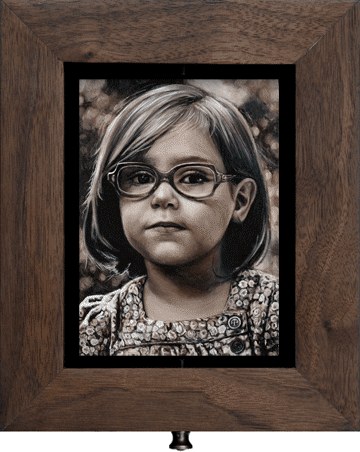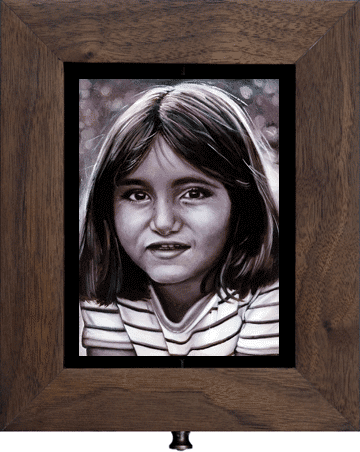
Portrait of Briar, oil on copper, 4″ x 4″
The children of artists: inspiration for us all.
One of the many benefits of working in the arts is meeting many wonderful, creative people. I met Avery Schwartz working at art handling company Artech. Years later his daughter Briar became my intern at the Seattle Art Museum and I was delighted to make a contemporary portrait miniature of her for my Monthly Miniature, Children of Artists series.
Briar was a dream intern, and her value went way beyond her “on-paper” qualities. With her hard work ethic, enthusiasm for trying new things, and easy and warm manner, she charmed all of us in the exhibitions department. I can easily see how she has inspired her fathers work over the course of her life and I’m very fortunate to have her pose as the subject for this Monthly Miniature painting. Her strength, confidence, and sassy wit inspired bold, but careful colors, lots of contrast and a direct composition. I’m confident that wherever Briar goes in life, she will be a source of inspiration to all around her.

Portrait of Briar
oil on copper
4″ x 4″
From Avery:
BRIAR – Well let’s see – what about Briar? Twenty seven years ago Polly and I, 40-year-olds, finally scored after three miscarriages. So Briar is our first and only child. Having a kid is a special kind of organic experience that helps me understand what it means to be human. A real thrill to look in to eyes only a few weeks old and see them devouring information around them. And then there are those first steps that irrepressibly are destined to happen. And bulbous full dipes wattling down the sidewalk. One of Briar’s qualities is that, thankfully, she was not shy about wading in to a new group of people and so she, as a kid, acquired friends easily. And Briar has a pretty noble view toward her friends – she is loyal and caring with them and as hard as Polly and I would try to break her connection with some kid, the more she would insist on the friendship.
One of the great things for an artist who has children is to bear witness to children’s art and realize what a powerful message that unfettered creativity can be – that is, not affected by expectation. One of my favorites that Briar did was when she broke a bowl, she taped all of the minuscule pieces back together and wrote on the tape a lengthy apology. (Still have the bowl which some day will get a sculpture pedestal and case). And then there was the drawing of the outside of our house when she, in a pique of anger, threw an expressionistic fit. (Still have it).
We have found that for every phase that Briar passes through we pass through our experiences at that particular age – sort of live it all over again except for this time we calculate and dole out our wisdom in afterthought. And, of course, that affects what I create. For me painting is an intensely searching vehicle that feeds and exercises my personality. I like to work mostly in a spontaneous process, and am always hoping to find some point between what is corporeal and what is not. So I am deeply invested in psychological signals about the human condition because, as Jane Siberry writes in the song Calling All Angels (with k.d. Lang) “we’re not sure how it goes”. So, while we’re at it with quotations, this one by Kevin Bacon, the actor, always helps, “I choose to live by my own code. I just try to be a good father to my children. Be a good husband to my wife, try to be a decent person in a fucked up world, and keep doing the work.”
Avery Schwartz
“I live and work in Seattle. My painting experience spans 40 years. In 1971 I was given a degree from the San Francisco Art Institute. I lived and worked in the City for sixteen years, living in and helping to develop an early rendition (in S.F.) of a live/work artist’s building – Project Artaud. I met and married my wife and moved to Seattle. We have a fantastic daughter.
I have worked many jobs over the years – everything from carpentry to working in a psychology research lab. In general I hate to work for money and as soon as I am being paid for something I begin to rebel against it. Whatever.
My grandparents were mostly Russian immigrants escaping from conscription into the Czar’s army, or from early communism, or the stigma attached to Jewish blood. My mother’s family suffered from her violent and abusive father from which her mother was divorced twice, until her uncle agreed to support them from the proceeds of an investment in land in Los Angeles. Shortly he killed himself and left the property – which became very valuable on the perimeter of LAX- to his sister, my grandmother. Meanwhile my mother, a woman of unusual beauty, upped her stage by marrying a hard-working son of a carpet salesman determined to have his first son become a doctor.
Like many artists, I was born with a brain that won’t die. Ideas and concepts keep floating in and art keeps running out.”


